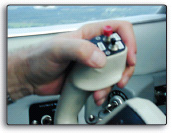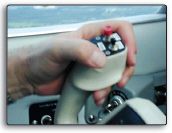I am actively involved in an organization offering introductory flights to youngsters. I have flown about 75 kids over the last few years, and enjoy seeing their thrill and excitement of flight. However, I had a situation happen recently that had me learning lessons from start to finish. For the first flight of the morning this day, I had one boy in the copilots seat and another behind him. The boy in the copilots seat was rather quiet, but said he was looking forward to his first flight in a single-engine airplane. He even had a few questions about instruments. Soon, we were accelerating down the runway. Immediately upon liftoff, the youngster in the copilot seat panicked, grabbed the yoke in front of him with both hands and pulled it toward him. My left hand was jerked off the yoke, the nose pitched up and the stall horn blared. I used both hands to push the yoke forward, but he had a death grip on it. I had to quickly get him to release his grip, which was a physical challenge and involved quickly using my right hand. The Cherokee at this point was losing speed and altitude and had very mushy controls. I managed to get the nose down and regain some speed; I think we were just a few feet off the deck when I got back full control. Instead of continuing the planned flight, I called tower to get a closed pattern to full stop. I told my “copilot” to hold onto his shoulder belt with both hands and squeeze it till I tell him to let go. I landed at a higher speed just in case we needed the energy, but my attention was really on him. Wouldnt you know-on shutdown, he tells me he had a great time. The lesson is that you can never assume that an inexperienced guest will react appropriately. You have to keep in the front of your mind your reactions to their unexpected behavior. I have changed my flight safety rules to ensure that the youngsters, and other guests in the copilot seat, now hold their shoulder belt with both hands for takeoff and landing. Of course, you can always put passengers in the rear seats only.




